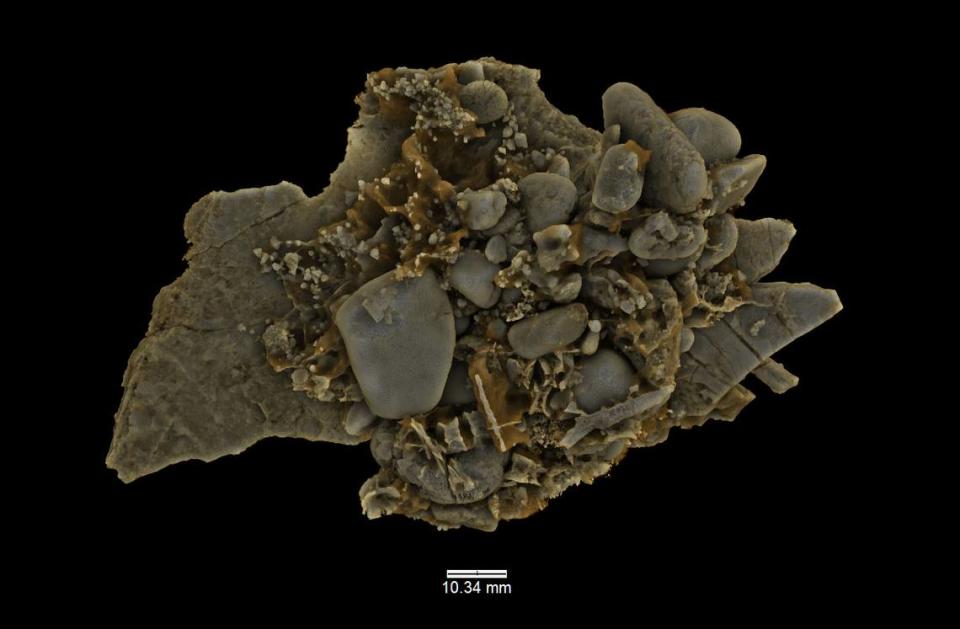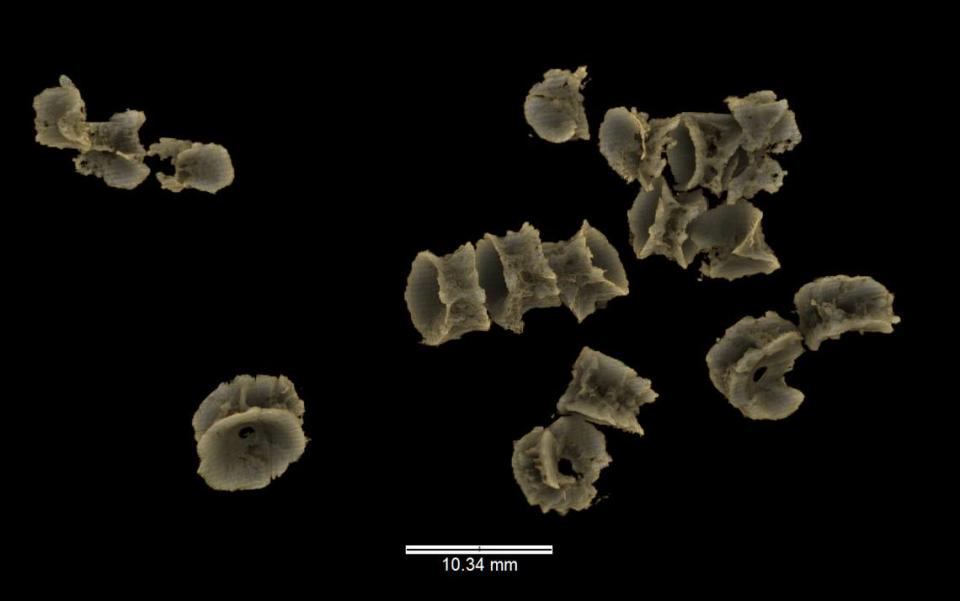Prehistoric predator’s last meal reveals an undiscovered ancient species, study says
Millions of years ago, Eric the plesiosaur swam through the waters of modern-day Australia.
Today, his skeleton is answering ancient questions.
In a new study, researchers examined the stomach contents of the opalized fossil of Eric, named by scientists at The Australian National University after a song from comedy group Monty Python, according to a statement from the university.
The prehistoric marine predator died between 66 and 208 million years ago, and his body went through a rare process called opalization.
The phenomenon, almost exclusively observed in Australia, turns bones that are preserved in silica into gemstones, according to the Australian Opal Centre.
Eric was found in an opal mine in South Australia in 1987 and has aided researchers in understanding aquatic systems from millions of years ago.
Not only was Eric’s body preserved, but so was his last meal.
For the first time, researchers took a closer look at what Eric was eating, and they published their findings on April 17 in Alcheringa: An Australasian Journal of Paleontology.

“Previous studies examined the exterior surface of Eric’s opalized skeleton to find clues,” study author Joshua White said in the university statement. “But this approach can be difficult and limiting as fossilised stomach contents are rare to find and there can (be) more hidden beneath the surface that would be near impossible for palaeontologists to see without destroying the fossil.”
Instead, White and his team used X-rays and CT imagery to take a scan of the fossilized gut. They used the images to create a three-dimensional model.
The researchers could see into the past, identifying gastroliths, or stomach stones, and other material the plesiosaur had eaten in his final days.
They also found 17 “previously undescribed fish vertebrae inside Eric’s gut,” confirming to the scientists that plesiosaurs were almost exclusively fish consumers, the statement said, and that this fish was nothing they had ever seen before.

The bones found in the gut belonged to a type of teleost fish the researchers said, which today includes the likes of tuna and halibut, as well as a diverse range of ray-finned fishes, according to the Encyclopedia Britannica.
Based on the size of the vertebrate and what researchers know today about teleosts, the paleontologists learned that Eric likely fed on small fish.
“Eric was a mid-tier predator, sort of like a sea lion equivalent, that ate small fish and was likely preyed upon by larger, apex predators,” White said in the statement.
The researchers hope Eric, and his stomach, can help scientists understand changing ecosystems.
“As environments change, so too does a marine reptile’s diet and understanding these changes can be used to help predict how animals of today will respond to current and emerging climate challenges,” White said in the statement. “If there’s any change to an animals’ diet, we want to look at why this change occurred and by some measure we can compare this to modern animals such as dolphins or whales and try to predict how their diets might change due to climate change and why.”
Observant customer notices hole on restaurant floor. Then came a prehistoric find
Rock crystal sat in museum for nearly 2 centuries — then they found it wasn’t a rock
Someone buried treasure and never returned — then volunteer found it 1,000 years later
Creature thought ‘extinct’ in African park spotted for first time in decades. See it

